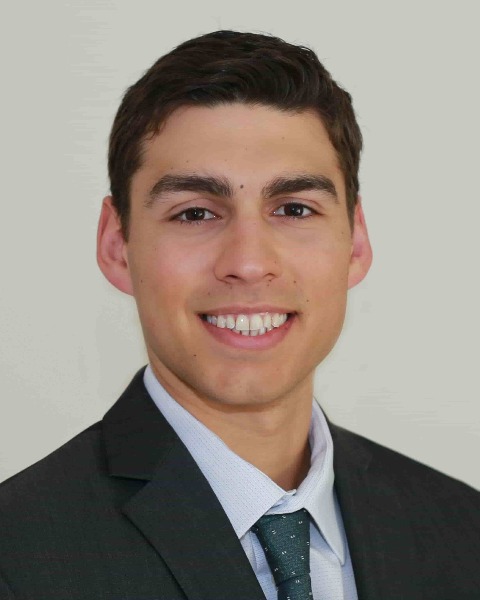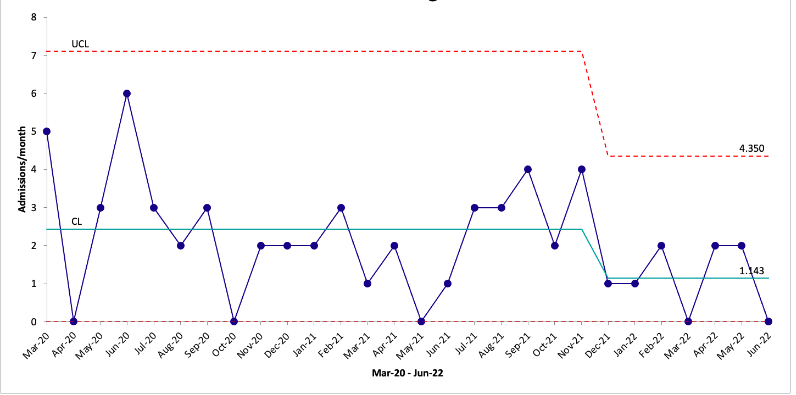Hospital Medicine: Hospital Medicine Quality Improvement
Hospital Medicine 2
763 - Higher Phototherapy Thresholds in Neonatal Hyperbilirubinemia: A Single-Center Quality Improvement Study
Friday, April 28, 2023
5:15 PM - 7:15 PM ET
Poster Number: 763
Publication Number: 763.12
Publication Number: 763.12
William T. Gravley, UCSF Benioff Children's Hospital Oakland, Oakland, CA, United States; Maya Raman, UCSF, San Francisco, CA, United States; Ernest Lai, University of California, Irvine, School of Medicine, Anaheim, CA, United States; Emily Pak, UC Davis, Sacramento, CA, United States; April J. Zaat, UCSF Benioff Children's Hospital Oakland, Berkeley, CA, United States; Clarissa Camarillo, UCSF Benioff Children’s Hospital Oakland, Emeryville, CA, United States

William T. Gravley, MD (he/him/his)
Pediatrics Resident
UCSF Benioff Children's Hospital Oakland
Oakland, California, United States
Presenting Author(s)
Background: Based on emerging evidence that neurotoxicity does not occur until bilirubin levels are well above exchange transfusion threshold and inconsistent evidence of adverse effects from phototherapy, the Northern California Neonatal Consortium (NCNC) created a hyperbilirubinemia management guideline that increased phototherapy and exchange transfusion thresholds compared to the 2004 AAP Hyperbilirubinemia Guideline. This guideline served as a reference for the updated 2022 AAP Hyperbilirubinemia Guideline.
Objective: The aim of our study was to determine if implementing the NCNC Guideline decreased the number of phototherapy and hyperbilirubinemia-related admissions and if this adversely increased admissions for exchange transfusion.
Design/Methods: After completing a literature review, we presented the NCNC Hyperbilirubinemia Guideline to stakeholders in the emergency department, primary care clinic, acute care wards, and NICU at our free-standing children’s hospital. We collected data capturing neonates admitted for jaundice after discharge from their perinatal hospitalizations. We completed a retrospective chart review and analyzed the data using a student’s T-test and statistical process control chart to assess effects of guideline implementation on admissions for phototherapy and exchange transfusion.
Results: Raw data showed a decrease in the mean number of admissions per month from March 2020 to June 2022. Using a statistical process control chart analysis pre- and post-intervention, we found the overall variation of neonatal hyperbilirubinemia acute care wards admissions to be in control with a period of special cause variation from December to June 2021 highlighting that decrease. While our single site data did not show a statistically significant change in mean monthly admissions, a single-tailed student’s t-test did approach a statistically significant decrease in the mean number of hyperbilirubinemia admissions pre- and post-intervention (2.60 vs. 1.83; p=0.104, 95% CI [1.24, 3.95] vs. [1.21, 2.45]). In both periods, there were no admissions for hyperbilirubinemia necessitating exchange transfusion.
Conclusion(s): The data presented provides reassurance regarding higher phototherapy thresholds for infants requiring readmission for jaundice. With significant overlap with the AAP 2022 Hyperbilirubinemia Guideline, the adoption of the NCNC Guideline reduced admissions without an increase in babies admitted to the NICU requiring exchange transfusion. After 18 months of safely using higher thresholds for treatment with phototherapy, our institution is well-poised to adapt to the new AAP guideline.

